Posts by Breakstone, White & Gluck
Warning to Massachusetts Residents: Tea Light Candles Recalled Due to Holder Burn/Melt Risk
Over 7 million candles have been recalled due to concerns that the cup holding the candles could melt or catch fire.
The Consumer Product Safety Commission has stated that the defective products, tea light type candles, were sold under the brand names Chesapeake Bay Candle and Modern Light.
The affected candles were sold in Massachusetts and nationwide at retailers such as Home Goods, Target, and Wegmans between July 2009 and February 2011.
The clear plastic cup holding the candles is at risk for melting or igniting during use. There has been one consumer report of the candle’s plastic cup melting during use.
Play It Safe and Avoid Injury This Baseball Season
Major League Baseball has opened its season and baseball players of all ages are stepping up to the plate across Massachusetts. Breakstone, White & Gluck wants you and your family to play it safe and enjoy the game.
Here, our Massachusetts personal injury lawyers offer safety tips on equipment, pitching and recovering from injuries:
Equipment and Field Safety
- Batting helmets must be worn whenever a player is waiting to bat, is at bat or is running the bases.
- Players should be instructed to have their attention focused on the batter, even when they are not actively involved in the game.
- Younger players should use balls that are partly rubberized to minimize the risk of injury.
Excessive Pitching
- Make sure pitchers follow league requirements for the number of innings they throw.
- You should also check the pitch count limits recommended by Youth USA Little League and the American Sports Medicine Institute.
How Coaches Can Identify Concussions
- The player appears dazed.
- The player is confused about their playing assignment.
- The player is unsure of the score or who the opponent is.
- The player moves clumsily or has poor balance.
Passengers Can Check a Bus Company’s Safety Record
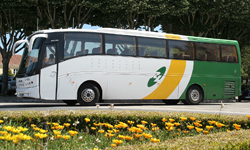 A series of recent tour bus accidents has raised public concern about which motor coach companies can be trusted on the roadways. Each year, 750 million passengers board motor coach buses in the United States for school trips, recreational excursions and commuting to work. The advantage is the low-cost fare, but many passengers are now worrying about safety.
A series of recent tour bus accidents has raised public concern about which motor coach companies can be trusted on the roadways. Each year, 750 million passengers board motor coach buses in the United States for school trips, recreational excursions and commuting to work. The advantage is the low-cost fare, but many passengers are now worrying about safety.
Dangerous Bus Accidents
On March 12, 15 passengers were killed in a bus crash on Interstate 95 in New York. The bus, operated by World Wide Tours, was transporting a group back from a Connecticut casino. The National Transportation Safety Board (NTSB) is still investigating, but says the driver was speeding.
Two survivors have filed personal injury lawsuits against the bus company, claiming negligence. One lawsuit was filed for $20 million in damages, while the other seeks $200 million.
The fatal bus accident was followed by three other bus accidents resulting in serious personal injuries and wrongful death. Just two days later, a tour bus crashed on the New Jersey Turnpike, killing the driver and one passenger. The Federal Motor Carrier Safety Administration is no longer allowing the company involved, Super Luxury Tours, Inc., to operate.
A week later, a bus carrying Korean tourists from Quebec to Boston crashed in New Hampshire, injuring passengers.
A fatal Massachusetts bus accident occurred over the weekend on Rte. 2 in Shirley when two men tumbled out of a bus window. A 31-year-old man died and a second man suffered serious personal injuries. The bus, owned by Colonial Tours of Boston, had been transporting a group back from touring Red Hook Brewery in New Hampshire.
In January, another bus accident in Connecticut killed a 17-year-old student when it crashed into a guardrail on Interstate 84. The bus had been transporting students to a robotics competition.
The NTSB has launched a six-month investigation into the tour bus industry and may then propose legislation. It plans to look at equipment upgrades and driver training. The NTSB said 60 percent of fatal bus crashes over a 12-year period were caused by driver error.
How Passengers Can Protect Themselves
In the meantime, passengers can protect themselves by researching the bus companies they use for travel. You can search a bus company’s safety rating and accident history on an online database operated by the Federal Motor Carrier Safety Administration.
Click here to access the database. Type in the name of the bus company you are researching.
While there is a lot of important data there, you will find two notable charts at the bottom of the page. The first chart tells you how many bus crashes the company has had in the past two years, including injuries and fatalities. The second chart shows you the Carrier Safety Rating, which will be listed as Satisfactory, Conditional or Unsatisfactory.
Finally, another way to check on a bus company is to use the Internet. Go to the website of the local or city newspaper and search their archives. If there was a major bus accident, you can expect the newspaper reported it.
Read More
Salmonella Outbreak in Rhode Island Now Linked to Death
A salmonella outbreak in Rhode Island now includes at least twenty-one people with severe illness, and one death, according to reports from public health officials in that state. Health officials are investigating another eighteen illnesses to see if they are tied to the salmonella outbreak.
Officials are focused on zeppole and other pastries which were made by Defusco’s bakery in Johnston, Rhode Island. According to news reports, investigators found pastry shells stored in boxes contaminated with raw eggs, and also found that custard used as filling was not being properly chilled.
Investigators have identified the particular strain of salmonella, known as Salmonella heidelberg, as the suspected organism responsible for the illnesses. They are now trying to determine whether the death of the elderly Rhode Island resident was caused by that particular strain.
The investigation into the food poisoning outbreak began on March 25, 2011, after nearly a dozen elderly residents of a Warwick nursing home became sick after eating pastries from Defusco’s bakery. Since March 12, two dozen victims have required hospitalization for severe illness.
Salmonellosis, the disease caused by salmonella infection or salmonella toxins, leads to diarrhea, fever, vomiting and abdominal cramps. Most people recover without treatment, but in the elderly, in infants, or people with compromised immune systems, the disease can be very severe, requiring hospital admission for rehydration and antibiotic treatment to prevent the spread of infection. Severe infections can lead to reactive arthritis and death.
Prevention of salmonella illnesses is straightforward. Food which may contain the bacteria, such as chicken or pork, must be prepared properly to kill the organism and destroy any salmonella toxin. Eggs and milk, and their products, must be properly prepared, handled, and refrigerated. Infections can also occur from contact with reptiles, pet rodents, and tainted fruits and vegetables. Proper hygiene–washing hands before and after handling food–is also a common sense method of reducing the likelihood of food poisoning.
Each year over 140,000 people suffer from salmonella poisoning in the U.S. and dozens die from the illness.
Lasko Recalls Box Fans Due To Fire Hazard
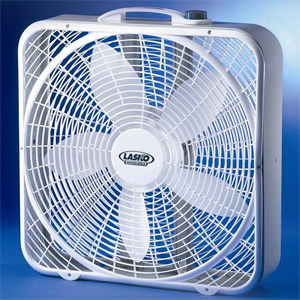 Lasko Products, Inc. has recalled 4.8 million box fans in Massachusetts and across the country after receiving seven reports of fires associated with motor failures, including two house fires and one barn fire. According to the Consumer Product Safety Commission, the Lasko fans pose a hazard due to an electrical failure in the fan’s motor.
Lasko Products, Inc. has recalled 4.8 million box fans in Massachusetts and across the country after receiving seven reports of fires associated with motor failures, including two house fires and one barn fire. According to the Consumer Product Safety Commission, the Lasko fans pose a hazard due to an electrical failure in the fan’s motor.
No injuries have been reported, but the fires resulted in extensive property damage. We urge Massachusetts consumers to check fans in their homes. It is also important to check your storage. Many of us in New England are not using fans right now because it is winter. But we use them plenty in the warm weather. Lasko is a large manufacturer; if you have a box fan, there is a good chance you have a Lasko model.
So please remember to check your storage, now or before using your fans this Spring and Summer.
The defective units have “Galaxy” and “Lasko” printed on the front of the fan. They were sold nationwide from July 2002 through December 2005 for $12 to $15. Lasko is a major company and many of us have Lasko fans. The fans were sold at a number of mass merchandisers. Visit the Consumer Product Safety Commision’s website to view the recall notice.
The model numbers for the Lasko box fans are 3720, 3723, and 3733. The Galaxy models include 4733 with the date “”2002-03″” or “”2003-04″‘.
The West Chester, Pennsylvania company said consumers should stop using the product and contact Lasko for a free replacement fused plug safety adapter. If you have an old fan, it may be a good time to purchase a new model.
Reminder to Check Seasonal Products for Recalls
Product recalls which affect you may be issued off-season. For this reason, it is always a good idea to check for product recalls when we change seasons and appliances. The model number should be printed somewhere on the product. Search for the model number on the Internet and on the Consumer Product Safety Commission website. You can also try searching by the manufacturer’s name.
If you cannot check your fan now, make sure to put a reminder on your electronic calendar.
Check the model numbers on other seasonal products as well, including your grill and children’s products, toys, bicycles and swingsets. Carefully inspect your products at the same time. Swingsets and any other product left outside can shift position or winter may have weakened the wood.
New Child Safety Seat Recommendations
The National Highway Transportation Safety Administration (NHTSA) and the American Academy of Pediatrics have issued new safety recommendations to protect young children from motor vehicle accidents. They are advising parents to keep children in rear-facing seats until age two, or until they reach the maximum height and weight requirements for the seat.
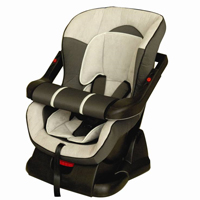
The previous recommendation from 2002 was also for children to ride in rear-facing car seats until they reached the maximum height and weight requirements – or until the child had reached a minimum of age one and 20 pounds. Using this standard, many parents turned the car seats around when their child reached age one.
The NHTSA and the American Academy of Pediatrics issued the recommendation citing a 2007 study in the journal Injury Prevention, which showed that children under age two traveling in rear-facing seats are 75 percent less likely to die or suffer severe injuries in car accidents.
The two groups made additional recommendations for booster seats, saying children should ride in them until they have reached four feet nine inches tall and are between eight and 12 years old.
The groups also recommend children ride in the backseat until they are 13.
The new recommendations come as motor vehicle accident deaths among children under age 16 have decreased significantly in recent years – 45 percent between 1997 and 2009, according to the American Academy of Pediatrics.
But motor vehicle accidents remain the leading cause of death for children ages four and older. More than 5,000 children, teens and young adults up to age 21 die in motor vehicle accidents each year. For every fatality, 18 children are hospitalized and more than 400 require medical care.
Massachusetts law requires child safety seats to protect children from car accidents. Children must be secured in child safety seats until they turn 7 years old.
Click here for more details about Massachusetts’ Child Passenger Safety Law.
Read More
Supreme Court Ruling in Defective Seat Belt Case Victory for Consumers
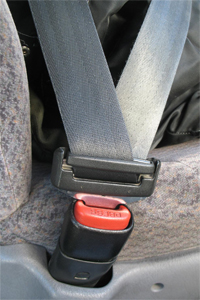 In a unanimous 8-0 ruling, the U.S. Supreme Court recently held that the Federal Motor Vehicle Safety Act does not preempt product liabililty claims brought under state common law for defective seat belts.
In a unanimous 8-0 ruling, the U.S. Supreme Court recently held that the Federal Motor Vehicle Safety Act does not preempt product liabililty claims brought under state common law for defective seat belts.
In 1993, the Federal Motor Vehicle Safety Standard (FMVSS) 208 required lap/shoulder belts in all vehicle seats except certain rear seats in vans. In the regulation, the National Highway Traffic Safety Administration (NHTSA) specified lap/shoulder belts were safer, but requiring them in all seat positions would not be cost-effective. The authorizing statute provided that compliance with the standard did not exempt manufacturers from common law liability.
Thanh Williamson died in a car accident while traveling in a Mazda mini-van that fell under this regulation. She was wearing a lap-only seat belt. Her family sued Mazda, alleging the company had a duty under state law to install the safer lap/shoulder safety belts. The case is Williamson v. Mazda Motor of Am., Inc.
A California trial court dismissed the lawsuit, finding the Federal regulation preempted the claims. An appellate court affirmed, relying on the ruling in Geier v. American Honda Motor Co. In that case, the court determined that the preemption applied in an auto defect claim involving the manufacturer’s failure to install air bags.
In Williamson, the Supreme Court distinguished between the regulations governing air bags and seat belts and said the seat belt regulation explicitly encouraged car manufacturers to install lap/shoulder belts. NHTSA supported the plaintiffs in an amicus brief, arguing that its policy objectives would have been met if the lap/shoulder belts had been installed.
Without a regulatory objective blocking installation of the lap/shoulder seat belts, the Court held that the auto manufacturer could not claim preemption based on the Federal agency’s judgment of cost-effectiveness. Such a judgment does not signify preemptive intent in most Federal safety standards, the Court said.
The Court’s ruling was a victory for consumers in the United States. Having the right to bring claims against manufacturers for defective products is not only a vital way to compensate people injured or killed by the defective products; product liability cases are also a strong force for the improvement of safety in consumer products.
Read More
Preventing Tragedies from Teens Driving While Texting, Distracted
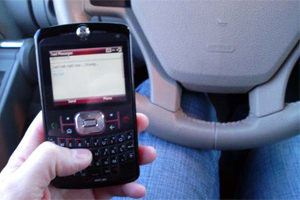 U.S. Transportation Secretary Ray LaHood and Consumer Reports have put attention back on an important safety issue by announcing a partnership to help prevent car accidents by teens driving while distracted and texting while driving.
U.S. Transportation Secretary Ray LaHood and Consumer Reports have put attention back on an important safety issue by announcing a partnership to help prevent car accidents by teens driving while distracted and texting while driving.
They released a poll that shows how widespread the problem remains, even after many states have adopted graduated licensing laws that ban teens from texting while driving or using cell phones in any capacity behind the wheel.
Among those polled, 63 percent of people under 30 said they have used a handheld phone while driving. Thirty percent admitted to texting while driving. Only a third said they feel such behavior is very dangerous and could cause motor vehicle accidents or pedestrian accidents.
Those rates were higher than for drivers over 30. Among those respondents, 41 percent admitted to using a cell phone while driving. Nine percent had texted while driving.
A 2009 study by the Virginia Tech Transportation Institute shows the risk for a car accident is 23 times greater when texting while driving. The study was financed by the Federal Motor Carrier Safety Administration.
LaHood and Consumer Reports have released a brochure called “Distracted Driving Shatters Lives,” offering tips for parents, including:
Set a good example and put away your own phone in the car. Some 40 percent of young people ages 12 to 17 say they have witnessed a driver using a cell phone in a way that threatened to cause a motor vehicle accident and result in personal injury.
Talk to your teen. Tell your teen it’s important not to use the phone or text while driving. Show them statistics about car accidents caused by texting while driving.
Establish driving rules and sign a pledge. Let your teenager know what you expect from them while driving. Put not using a cell phone while driving at the top of the list. Tell your teen what the punishment will be if they break the rules and have them sign a written contract to reinforce your message. And remind them they may face other penalties.
Many states, such as Massachusetts, have graduated licensing laws that ban drivers under 18 from using cell phones while driving. Under Massachusetts’ Safe Driver Law, drivers under 18 face a 60-day license suspension if they are caught using a cell phone behind the wheel. They must also pay a $100 fine and take an education class. The penalties increase for subsequent offenses.
To read the “Distracted Driving Shatters Lives,” brochure, click here.
Read More
Topomax Linked To Birth Defects
Pregnant women taking Topomax have an increased risk of bearing children with birth defects such as a cleft lip or palate, the Food and Drug Administration (FDA) announced today. The agency is now changing the drug’s label warning and pregnancy classification to inform women about the drug’s defects.
Topomax – known as topiramate in its generic form – is prescribed to treat epileptic seizures and prevent migraine headaches. It is also used on an off-label basis to treat weight loss, alcohol dependence and psychiatric illnesses such as bipolar disorder.
Topomax is manufactured by Ortho-McNeil-Janssen, which has headquarters in Raritan, New Jersey.
New data from the North American Antiepileptic Drug Pregnancy Registry show infants exposed to topiramate as a single therapy in the first trimester had a 1.4 percent prevalence of personal injury and oral cleft birth defects.
This is compared to .38 – .55 percent for other antiepileptic drugs. The oral cleft birth defect rate was .07 percent for infants born to mothers without epilespy and who were not treated with other antiepileptic drugs.
The FDA has re-classified Topomax from a Pregnancy Category C to Pregnancy Category D drug, indicating there is positive evidence of human fetal risk based on human data but the potential benefits from use of the drug in pregnant women may be acceptable in certain situations despite its risks.
The FDA is advising doctors to avoid prescribing the defective drug to women of childbearing age because oral clefts occur in the first trimester before many women know they are pregnant. Doctors are advised to seek alternative medications or if that’s not possible, to recommend proper use of birth control.
Read More
Commercial Landlord Liability for Personal Injury Expanded In Massachusetts
By David White

